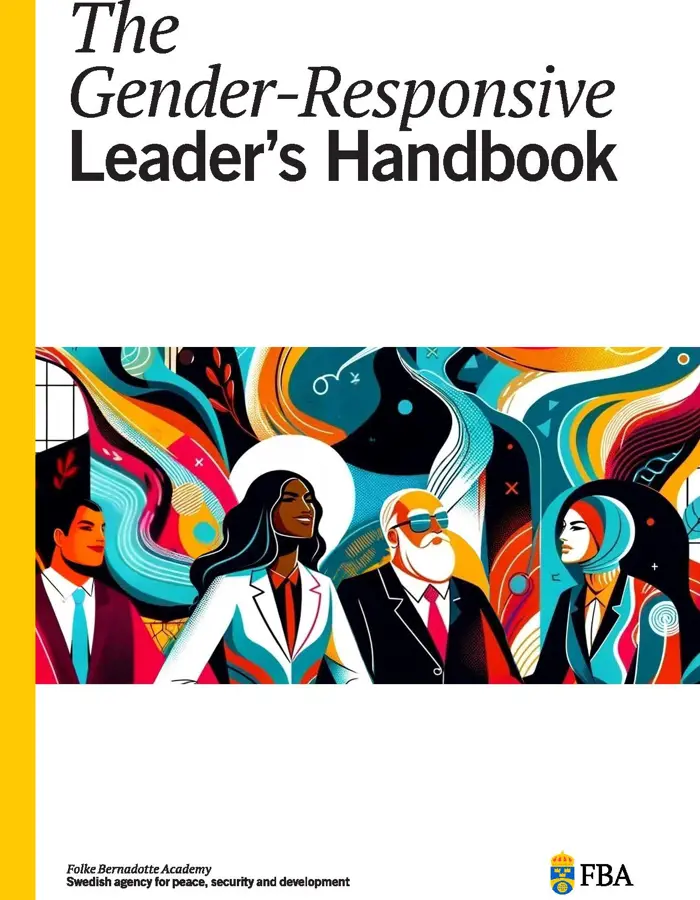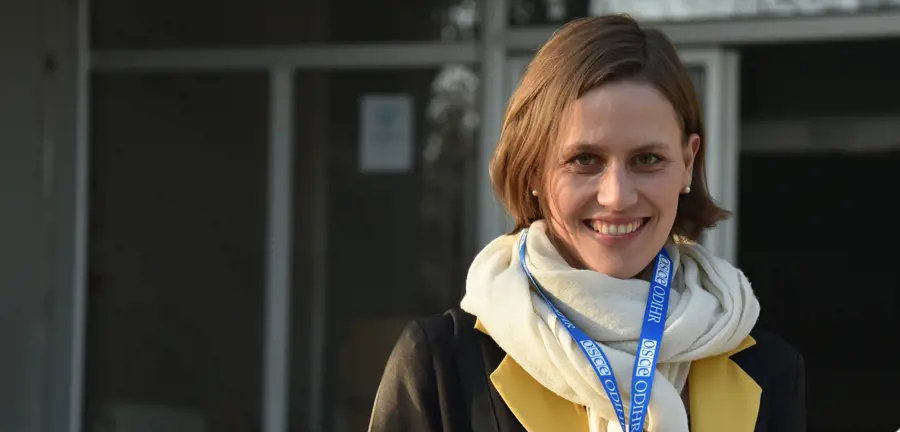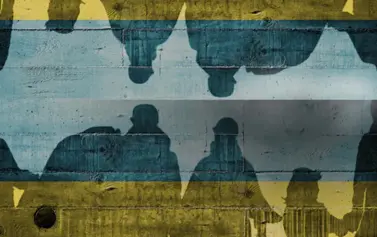"Leaders must take responsibility for gender equality both outside and behind closed doors"
The Women, Peace and Security agenda calls on all UN member states, entities, and other peace organizations to apply a gender perspective in their work on peace, security, and development. However, women's and girls' needs and experiences still play a marginalIzed role in international peacebuilding efforts. On International Women's Day on March 8, FBA highlights the responsibility that leaders and managers within peace organizations have to promote gender equality within their organizations and their operations.International Women's Day is celebrated around the world on 8th March. It was adopted as an official UN day in 1977, but its roots can be traced back to labor movements around the turn of the last century. One of the earliest known observances of Women's Day was organized by the Socialist Party of America in 1909, in memory of a strike where 15,000 female textile workers marched through New York to protest their working conditions and for expanded political rights.
Since then, many important advances have been achieved. In 2000, after systematic advocacy from women's organizations from the Global South, the UN Security Council adopted Resolution 1325, which recognised that women’s specific experience of peace and conflict is of direct relevance to international peace and security and affirmed that women should participate on equal terms with men in the work of creating and maintaining peace and security.
Resolution 1325 has since been followed by several resolutions, together known as the women, peace and security agenda. The agenda calls on all UN member states, entities, and other organizations working for peace, security, and development to apply a gender perspective in their activities.
Peace processes more successful when women have influence
The Women, Peace and Security agenda, with its focus on gender equality in conflict contexts, is an important step in the fight for both peace and women's equal rights.
Kristin Valasek at FBA's Gender Equality Unit explains that research has shown that peace processes where women have been involved and had influence have been more successful and have led to more sustainable agreements. For example, she refers to the study Making Women Count - Not Just Counting Women from 2016, which found that peace agreements where women had influence were 20% more likely to hold for two years and 35% more likely to hold for 15 years. Among the examples studied are the Good Friday Agreement in Northern Ireland in 1998 and the 1996 peace agreement following the civil war in Guatemala.
– There are several risks associated with peace processes that exclude women and girls’ specific needs and experiences. For example, some forms of violence increase after the official conflict has ended, such as men's domestic violence against women, which is often due to inadequate support in the transition to civilian life for men who have previously participated in fighting. But research has also shown that more gender-equal countries are less likely to resort to violence during international crises.
Leadership is key to gender-responsive peace and security work
Since 2020, Kristin Valasek has been coordinating FBA:s Gender-Responsive Leadership Initiative, which is part of FBA:s ongoing work to support the implementation of the women, peace and security agenda. As part of the initiative, FBA together with leadership and gender equality expert Leslie Groves Williams (PhD) have developed a conceptual framework and learning materials along with delivering learning programmes on gender-responsive leadership for leaders and managers within peace and security organizations such as the EU, UN and the OSCE.
Like most other multilateral organizations, they have comprehensive policy documents on how to promote gender equality - both within their own organizations and in their activities. The idea behind Gender-Responsive Leadership is that leaders are crucial to ensuring that policy documents are translated into concrete action.
– It is nothing new that leaders are crucial to gender equality. As long as there have been women's movements advocating for peace, they have urged people in positions of power to make changes. After all, there is a limit to how much you can achieve from a lower position, such as a gender advisor role, whenit comes to changing an entire organization. It is the leaders' task. It is they who have the responsibility, mandate, and knowledge to drive sustainable change for gender equality.
Gender-Responsive Leadership is not about explaining to leaders that gender equality is important. Nor is it about making leaders gender experts.
Instead, it is about giving leaders and managers concrete tools to contribute to gender equality in conflict contexts as well as within their own peace and security organizations, by developing fivefive core skills that leaders and managers use to successfully promote gender equality.
1. Lead by example
– The reason we focus on this skill first is because of the impact it has when a leader is consistent and actually does what they say on 8th March during the remaining 364 days of the year. Overall, it is about realizing that everyone is affected by gender stereotypes and bias.So it is important to provide leaders and managers with tools to ensure that their decisions, from what gets funding to who gets certain tasks, are not influenced by gender bias that can lead to discrimination.But also to take a public stand for gender equality, be an ally to women, and intervene in all forms of sexism. . To lead by example, leaders must take responsibility for gender equality both outside and behind closed doors, says Kristin Valasek.
2. Set priorities and targets
– Leaders are crucial here thanks to their ability to see the bigger picture. To identify gaps and needs and then set clear and measurable goals for themselves and their employees. Here, you will see concrete results for gender equality. This is where you see concrete results for gender equality. For example, many organizations have decided to stop arranging single-sex panels - mannels - and that 15% or more of the budget should go to activities that focus on gender equality, including women's and girls' rights. These are very clear and measurable waysto contribute to gender equality.
3. Communicate clearly and convincingly
– Leaders and managers spend a lot of time communicating. They sit in meeting after meeting, listening to updates, discussing, taking decisions or providing feedback. Therefore, they should use gender-responsive language, such as "chairperson" or "chair" instead of "chairman". They should also make sure that they speak about gender equality convincingly and consistently address gender equality and women's rights in their communication, both externally and internally.
4. Manage staff, resources, and activities
– Beautiful policy documents and good ideas are not enough if there is a lack of funding and staff to implement activities. At the same time, managers often have many different responsibilities and priorities. Here, we usually recommend building a good working relationship with gender equality experts within the organization, and actually swapping roles. We often hear leaders say that they support their gender equality experts, but it is not always possible for the gender equality expert to create sustainable change within an organization. Leaders and managers can, especially senior leaders. So we would rather hear leaders saying ‘I receive excellent support from my gender equality expert which enables me to manage personnel, resources and activities in a gender-responsive manner.’.
5. Hold self and others to account
– This is often where we see the most room for improvement. There may be policy documents , but follow-up is often lacking. And when we are not held accountable for contributing to increased gender equality, it is pushed down on the to-do list. Not because managers and staff don't want to, but because there is so much else that needs to be done. So if there is no regular reporting on the work of gender mainstreaming, other things will be prioritized. It simply means that leaders and managersmust create a demand for gender equality - by clearly following up, providing feedback, and taking the necessary actions to enable their staff to succeed in their gender equality work.








 >
> >
>

